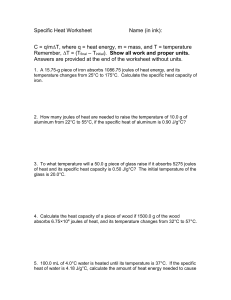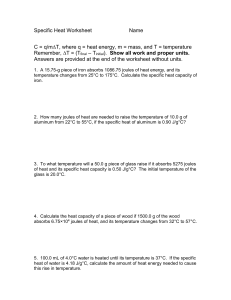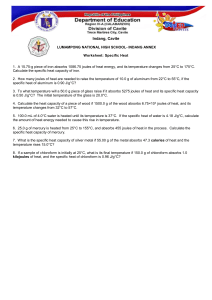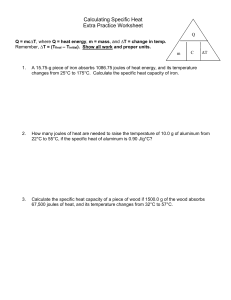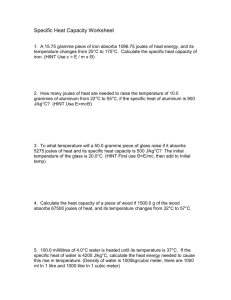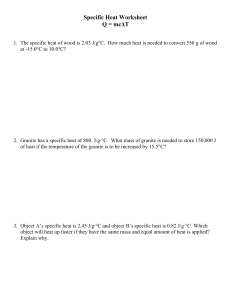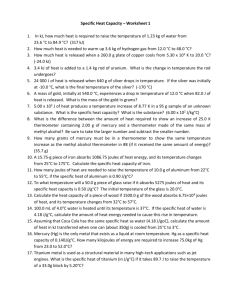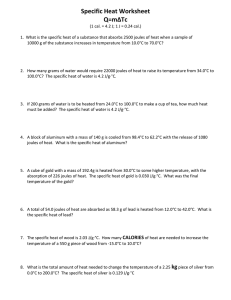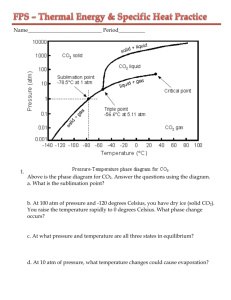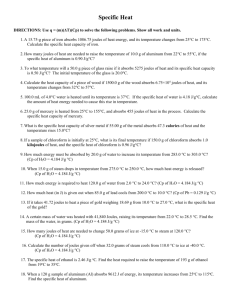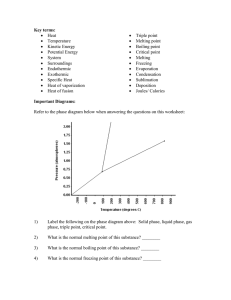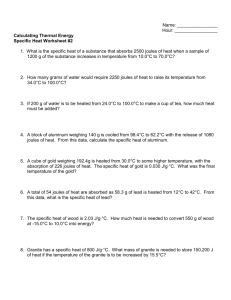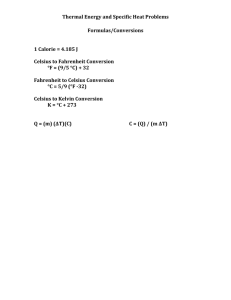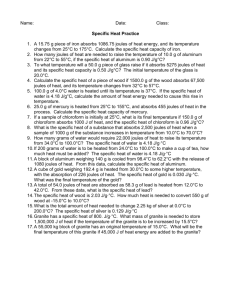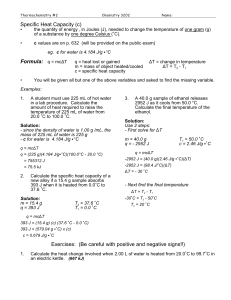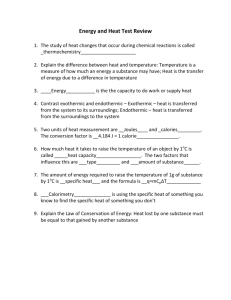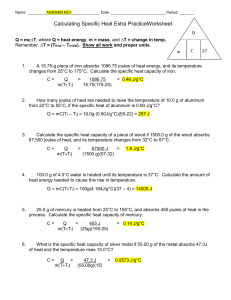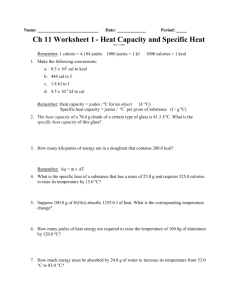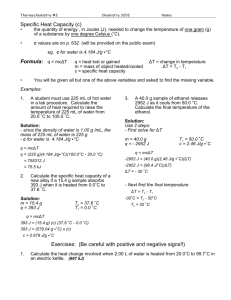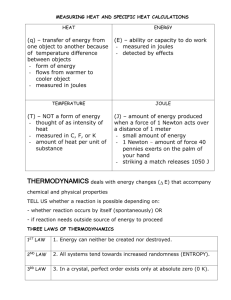Specific Heat Worksheet
advertisement
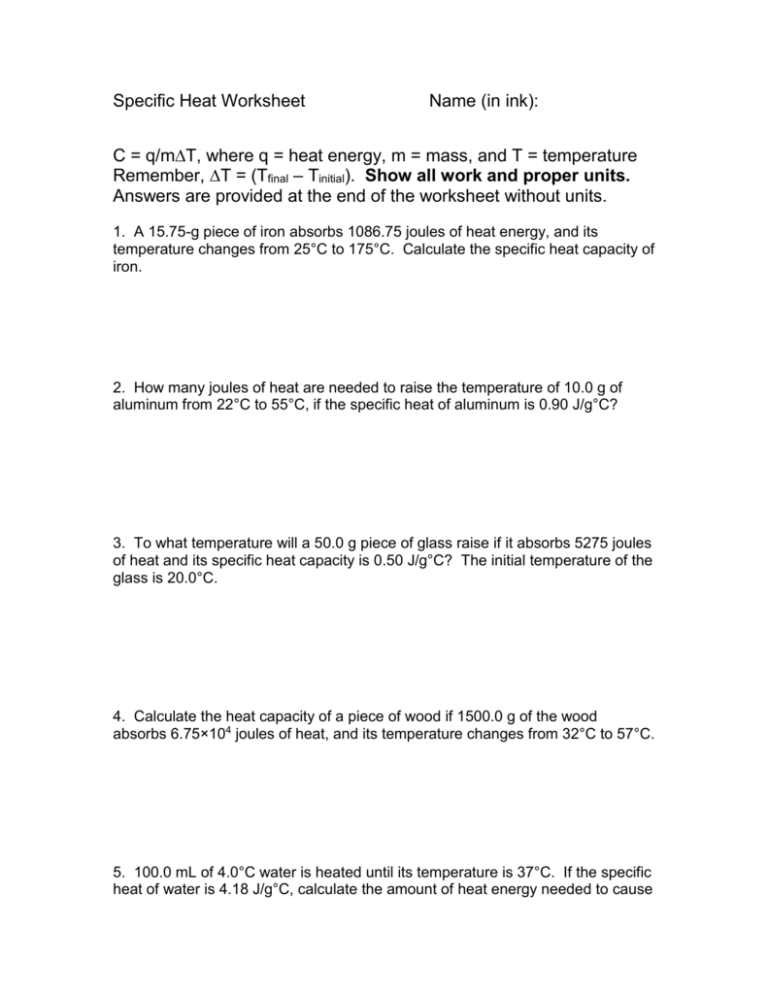
Specific Heat Worksheet Name (in ink): C = q/m∆T, where q = heat energy, m = mass, and T = temperature Remember, ∆T = (Tfinal – Tinitial). Show all work and proper units. Answers are provided at the end of the worksheet without units. 1. A 15.75-g piece of iron absorbs 1086.75 joules of heat energy, and its temperature changes from 25°C to 175°C. Calculate the specific heat capacity of iron. 2. How many joules of heat are needed to raise the temperature of 10.0 g of aluminum from 22°C to 55°C, if the specific heat of aluminum is 0.90 J/g°C? 3. To what temperature will a 50.0 g piece of glass raise if it absorbs 5275 joules of heat and its specific heat capacity is 0.50 J/g°C? The initial temperature of the glass is 20.0°C. 4. Calculate the heat capacity of a piece of wood if 1500.0 g of the wood absorbs 6.75×104 joules of heat, and its temperature changes from 32°C to 57°C. 5. 100.0 mL of 4.0°C water is heated until its temperature is 37°C. If the specific heat of water is 4.18 J/g°C, calculate the amount of heat energy needed to cause this rise in temperature. 6. 25.0 g of mercury is heated from 25°C to 155°C, and absorbs 455 joules of heat in the process. Calculate the specific heat capacity of mercury. 7. What is the specific heat capacity of silver metal if 55.00 g of the metal absorbs 47.3 calories of heat and the temperature rises 15.0°C? 8. If a sample of chloroform is initially at 25°C, what is its final temperature if 150.0 g of chloroform absorbs 1.0 kilojoules of heat, and the specific heat of chloroform is 0.96 J/g°C? Answers in random order without units: 0.14; 1.8; 32; 3.0102; 0.46; 1.4104; 0.240; 231
